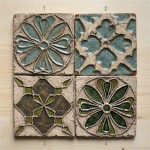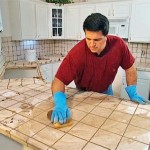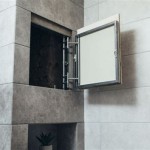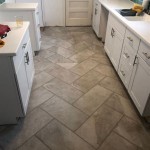How to Remove Silicone Sealant From Tiles
Silicone sealant is a common material used in bathrooms and kitchens to create waterproof barriers around sinks, bathtubs, showers, and backsplashes. Its flexible and durable nature makes it ideal for these applications. However, over time, silicone sealant can become discolored, cracked, or even develop mold, requiring removal and replacement. This process, while seemingly straightforward, can be challenging due to the sealant's adhesive properties and resilience. This article provides a comprehensive guide on how to effectively remove silicone sealant from tiles without causing damage.
The key to successfully removing silicone sealant lies in understanding its composition and how it bonds to surfaces. Silicone is a polymer that forms a strong, flexible seal. This bond makes it resistant to many solvents and physical removal methods. Therefore, a combination of techniques, patience, and appropriate tools is often necessary to achieve a clean removal.
Preparation and Safety Precautions
Before commencing the removal process, thorough preparation is crucial. This includes gathering the necessary tools and materials, as well as taking appropriate safety precautions to protect oneself and the surrounding environment.
Gathering Tools and Materials: A variety of tools can be used to remove silicone sealant, each with its own advantages and disadvantages. Some of the most common and effective tools include:
- Utility Knife or Razor Blade Scraper: These tools are essential for scoring and cutting through the bulk of the sealant. Choose a utility knife with a sharp, replaceable blade for optimal performance. A razor blade scraper, often used for removing paint from glass, can be particularly useful for scraping away thin layers of sealant.
- Silicone Sealant Removal Tool: These specialized tools are designed with a shaped edge to help lift and remove sealant from corners and edges. They often come with multiple profiles to accommodate different sealant bead sizes and shapes.
- Plastic Scraper: A plastic scraper is less likely to scratch or damage the tile surface compared to metal scrapers. It can be used to remove softened sealant or to clean up residual residue.
- Heat Gun or Hair Dryer: Applying heat can soften the silicone sealant, making it easier to remove. A heat gun is more effective but must be used carefully to avoid overheating and damaging the tiles or surrounding materials. A hair dryer provides a gentler heat source.
- Chemical Silicone Softener/Remover: Various chemical solvents are available that are specifically designed to soften or dissolve silicone sealant. These products often contain compounds that break down the polymer bonds, making the sealant easier to scrape away. It’s crucial to check compatibility with the tile material before using.
- White Spirit (Mineral Spirits): White spirit can be used to clean up residual silicone residue after the bulk of the sealant has been removed.
- Microfiber Cloths or Rags: Clean cloths are needed to wipe away softened sealant, chemical residue, and to clean the tiles after the removal process.
- Spray Bottle with Water and Mild Detergent: This solution can be used to clean the tiles after the removal process and to remove any lingering residue.
Safety Precautions: Working with sharp tools and chemical solvents requires taking necessary safety precautions. Safety is paramount to prevent injuries or exposure to harmful substances. Specific precautions include:
- Wear Safety Glasses: Silicone can break apart irregularly and fly into the eyes. Safety glasses will protect the eyes from projectiles and chemical splashes.
- Wear Gloves: Chemical silicone softeners and even white spirit can irritate the skin. Wearing gloves, preferably nitrile or rubber, will protect the hands.
- Ensure Adequate Ventilation: Some chemical silicone softeners release fumes. Work in a well-ventilated area or use a respirator mask if necessary.
- Protect Surrounding Surfaces: Cover nearby surfaces with drop cloths or plastic sheeting to protect them from chemical splashes or scratches.
- Dispose of Waste Properly: Dispose of removed silicone sealant, rags soaked with chemicals, and used blades in a sealed container according to local regulations.
Methods for Removing Silicone Sealant
There are multiple methods available for removing silicone sealant, ranging from manual techniques to the use of chemical solvents. The best method will depend on the type of sealant, the surface it’s adhered to, and the available tools and resources.
Manual Removal: The initial step in removing silicone sealant typically involves manual techniques. This approach relies on physically cutting and scraping away the sealant using tools such as utility knives, razor blade scrapers, or silicone sealant removal tools.
- Scoring the Sealant: Use a sharp utility knife to carefully score along both edges of the sealant bead where it meets the tile surface. The goal is to cut through the sealant without damaging the underlying tile. Apply even pressure and maintain a consistent angle.
- Lifting the Sealant: Insert a silicone sealant removal tool or the tip of a utility knife under the scored edge of the sealant. Gently lift and peel away the sealant, working along its length. If the sealant is resistant, try scoring it again or applying heat to soften it.
- Scraping Away Residue: After removing the bulk of the sealant, there will likely be residual residue remaining on the tile surface. Use a razor blade scraper or plastic scraper to carefully scrape away this residue. Hold the scraper at a low angle (around 15-30 degrees) to avoid scratching the tile.
Using Heat to Soften Sealant: Applying heat to the silicone sealant can soften it, making it easier to remove. This method is particularly useful for stubborn sealant or for sealant that has become hard and brittle over time. Always exercise caution when using heat near combustible materials.
- Apply Heat: Use a heat gun or hair dryer to apply heat to the sealant. Move the heat source back and forth along the sealant bead, focusing on softening the edges. Be careful not to overheat the tiles or surrounding materials. For heat guns, use a low heat setting and maintain a distance of at least 6 inches.
- Remove Softened Sealant: While the sealant is still warm and pliable, use a utility knife or silicone sealant removal tool to lift and peel it away. The softened sealant should come off more easily than when cold.
- Scrape Away Residue: After removing the bulk of the softened sealant, use a razor blade scraper or plastic scraper to remove any remaining residue.
Chemical Silicone Softeners/Removers: Chemical silicone softeners or removers are specifically designed to break down the polymer bonds in the sealant, making it easier to remove. These products are typically applied to the sealant and allowed to dwell for a specified period of time before being scraped away. Always follow the manufacturer's instructions carefully when using chemical solvents.
- Apply the Chemical Softener: Apply the chemical silicone softener/remover to the sealant according to the manufacturer's instructions. This may involve applying it with a brush, spray bottle, or directly from the container. Ensure that the sealant is thoroughly coated with the chemical.
- Allow Dwell Time: Allow the chemical softener to dwell for the recommended period of time. This allows the chemical to penetrate the sealant and break down its structure. Refer to the manufacturer's instructions for the appropriate dwell time.
- Remove Softened Sealant: After the dwell time, use a utility knife, silicone sealant removal tool, or plastic scraper to remove the softened sealant. The sealant should be significantly easier to remove than before.
- Clean Up Residue: After removing the bulk of the softened sealant, clean up any remaining residue with white spirit (mineral spirits) or a dedicated silicone residue remover. Wipe the surface with a clean cloth.
Post-Removal Cleaning and Inspection
After removing the silicone sealant, it is important to thoroughly clean the tile surfaces and inspect them for any damage. This step ensures a clean and smooth surface for applying new sealant and helps prevent future problems.
Cleaning the Tiles: Clean the tiles with a solution of warm water and mild detergent. This will remove any remaining residue from the sealant, chemical solvents, or dirt and grime. Use a non-abrasive sponge or cloth to avoid scratching the tiles. Rinse the tiles thoroughly with clean water and allow them to dry completely before applying new sealant.
Inspecting for Damage: Carefully inspect the tiles for any signs of damage, such as scratches, chips, or cracks. If any damage is found, it should be repaired before applying new sealant. Small scratches can often be buffed out with a polishing compound, while larger chips or cracks may require professional repair.
Preparing for New Sealant: Once the tiles are clean and dry, and any damage has been repaired, the surface is ready for the application of new silicone sealant. Ensure the area is completely dry and free of any contaminants before applying the new sealant. A clean, dry surface will promote proper adhesion and ensure a long-lasting seal.
Removing silicone sealant from tiles requires patience, the right tools, and a methodical approach. By following the steps outlined in this article, it is possible to effectively remove old or damaged sealant without damaging the tiles. Proper preparation, careful execution, and thorough cleaning are essential for achieving a professional-looking result and ensuring the longevity of the new sealant.
How To Remove Silicone Sealant From Tile Glass Metal And Wood
How To Remove Silicone Sealant From Tile Glass Metal And Wood

How To Remove Silicone From Tiles A Step By Guide

How To Remove Silicone From Tiles A Step By Guide

How To Remove Silicone Sealant From Tiles 100 Characters

How To Remove Silicone Sealant Daqiq Chimie Co
How To Remove Silicone Sealant From Tile Glass Metal And Wood
How To Remove Silicone Sealant From Tile Glass Metal And Wood
How To Remove Silicone Sealant The Best Way Caulk

How To Remove Silicone Sealant Daqiq Chimie Co
Related Posts








